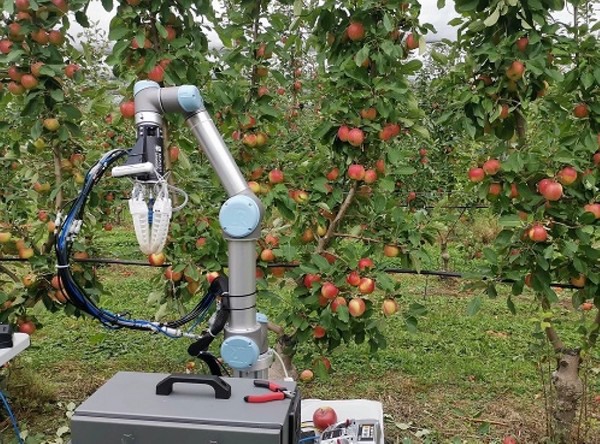In order to relieve some of the stressors caused by the labor shortage in the Australian fruit picking industry, researchers have cooked up a creative partial solution to this problem, developing a fruit-picking robot that can harvest apples from orchards at high speed.
Researchers at Australia's Monash University Department of Mechanical and Aerospace Engineering have created a robot that uses a mix of cameras and deep learning algorithms to scan the trees of an orchard and detect the pieces of fruit, which requires it to process information on their shape, orientation and the location of the stem-branch joint to minimize damage to the produce and the surrounding foliage.
 An apple-harvesting robot created by Monash University researchers is put through its paces in the field / Image: Monash University
An apple-harvesting robot created by Monash University researchers is put through its paces in the field / Image: Monash University
“The robot grasps apples with a specially designed, pneumatically powered, soft gripper with four independently actuated fingers and suction system that grasps and extracts apples efficiently, while minimizing damage to the fruit and the tree itself," says Dr Chao Chen, who led the research. “In addition, the suction system draws the apple from the canopy into the gripper, reducing the need for the gripper to reach into the canopy and potentially damaging its surroundings. The gripper can extract more than 85 per cent of all apples from the canopy that were planned for harvesting.”
According to an article on newatlas.com¸ the robot an identify more than 90 percent of apples within the view of its camera and a distance of around 1.2 m (4 ft). It says the machine can operate in all lighting and weather conditions, and requires less than 200 milliseconds to process the image of an apple.
The researchers have been conducting field trials of their apple-harvesting robot this year, and report that it damaged less than 6 percent of its haul by inadvertently removing their stems (though these stem-less apples still may be sold by some retailers). Running the machine at half speed saw it identify, pick and deposit an apple every 12.6 seconds, while streamlining the pick-and-drop process saw this reduced to around 9 seconds. Ultimately, running the robot at full capacity cut this harvesting time to 7 seconds per apple.
